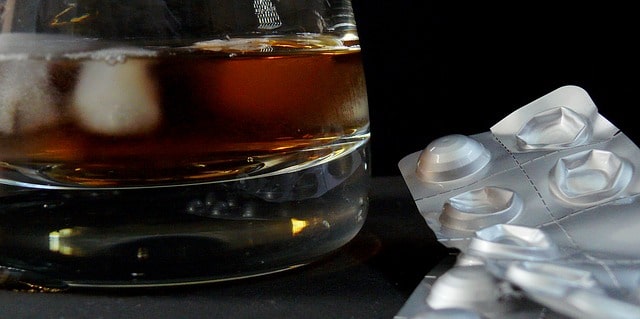Drinking and Drugs: A Dangerous Combo

Do you know someone who struggles with drug and alcohol abuse? We all do.
Drinking alcohol in moderation is no problem, but mixing hard alcohol and drug abuse is extremely dangerous.
According to 2019 stats, 25.8% of Americans 18 and over binge drink. In the 12 months before April 2021, 100,306 people died of drug overdoses.
When people mix drugs and alcohol, it sets off multiple effects. Certain effects cause bodily contradictions that are jarring to the organs. A perfect example is the combination of cocaine and alcohol, where the stimulant drug and depressant beverage send conflicting signals to the heart.
Sadly, thousands of people across the US indulge in mixed drug and alcohol abuse each day. The problem is especially big among young people, who gain access to drugs and alcohol at parties where binge drinking is common.
Get Help Today
Don't go through the process of recovery alone. There are people who can help you with the struggle you're facing. Get in touch with one today.
Make a Call
Alcohol Abuse
Most people drink alcohol in moderation, whereas some individuals lack self-restraint or an awareness of their body’s tolerance. When a person doesn’t keep track of his/her intake or overdrinks, alcohol addiction soon takes hold.
Alcohol use disorder (AUD) can range from excessive (five drinks per day) to dangerously extreme (eight drinks or more). People with AUD are at risk of numerous health problems, especially liver damage.
With alcohol consumption, the liver’s role is to remove toxins from the beverage so they don’t enter the bloodstream. When impacted by binge drinking, the liver gets overwhelmed and can’t do its job properly. Eventually, the liver wears down and fails.
Binge drinking, one of the riskiest activities of AUD, occurs when a person exceeds the daily alcohol limit (3-4 drinks per day) in two hours. According to a 2017 study, just seven weeks of occasional binge drinking can result in the early onset of liver damage.
Substance Abuse
Combining alcohol and drugs is known as substance abuse. Mixing drinks with addictive substances compounds the dangers of both.
Alcohol itself is a depressant that makes people dizzy, emotional, uninhibited, uncouth and possibly belligerent. When mixed with downer drugs — i.e. depressants like heroin and fentanyl — alcohol can depress breathing, blood pressure and heart rates. Downers exacerbate the effects of alcohol.
Other alcohol and drug combinations can have contradicting effects that shock the body. A mixture like cocaine and alcohol, where the stimulant (cocaine) speeds blood flow, can cause a rapid surge of alcohol to the brain. This makes the effects far more intoxicating.
The most dangerous forms of substance abuse involve a mixture of alcohol and multiple drugs. When a person mixes alcohol with one stimulant and one downer drug, it multiplies and contradicts the impact of alcohol simultaneously.
Mixing Alcohol and Drug Abuse
Alcohol and drug use have long been facts of party life. Since the 1960s, both have been associated with concerts, college parties, club culture and metropolitan nightlife. It’s trouble enough when people don’t regulate their drinking. When mixed with illicit drugs, the risks are often deadly.
In addition to liver disease, alcohol mixed with drugs puts people at increased risk for the following:
- Wild mood swings – aggressive, violent public behavior with grave consequences.
- Heart disease – heart attacks, abnormal heartbeats, low blood pressure, hypertension and other cardiovascular problems.
- Stroke – more common in people who drink excessively.
- Lack of coordination – alcohol impacts motor skills and renders people imbalanced, wobbly and uncoordinated; dangerous states in many physical situations.
Drug and alcohol combinations vary depending on the types of drugs involved and the usage severity.
Alcohol and Stimulants
Alcohol and stimulant drug combinations place users at greater risk of overdrinking. The stimulant counteracts the effects of alcohol, making the person more energized than they normally would be in a drunken state.
Due to the presence of stimulants in the system, the user might not even feel the buzz of alcohol after 3-4 drinks. Cocaine users could easily down six or more drinks in a single setting, much faster than they would on a drug-free drinking binge.
Mixing alcohol with stimulants is extremely dangerous to the central nervous system. It can accelerate blood pressure and send alcohol toxins through the body at a rapid pace.
- Cocaine and alcohol – Mixing cocaine and alcohol exacerbate the impact of both substances. The effects of cocaine abuse (increased heart rate, blood pressure, body temperature) send alcohol to the brain while masking the buzz, emboldening the user to drink even more. Overdoses at parties often involve alcohol and cocaine mixtures.
- Ecstasy and alcohol – Ecstasy is a party drug that makes users feel energized and euphoric. It combines the effects of cocaine (a popular disco-era drug) and LSD (the psychedelic drug), which makes it popular among ravers. Ecstasy can cause high blood pressure, sweating, diarrhea and dehydration, causing the user to drink more.
Stimulants are popular at parties and nightclubs because they energize users to dance and stay wild till dawn. These same places also serve alcohol. At underage parties where everyone is below the legal drinking age, kids often binge drink and compound the dangers even further.
Alcohol and Depressants
When people mix alcohol with downer drugs, it accelerates alcohol’s depressing effects on the body. Harmful interactions between drinks and downer drugs include dizziness, slowed breathing and lowered heart rate.
- Heroin and alcohol – Heroin is a euphoric drug that makes the body feel good. Some people get addicted after one use. The body quickly develops tolerance to the drug, causing users to increase their dosages. When mixed with alcohol, the ill effects of heroin (slowed heart rate, breathing) are often more fatal.
- Marijuana and alcohol – Though a natural substance with medicinal benefits, marijuana can cause anxiety, dizziness and lack of coordination. Combining marijuana with alcohol is dangerous because pot reduces nausea, a tell-tale sign of drunkenness. A smoker is likely to overdrink, unaware of his/her drunkenness. If done regularly, it can cause alcohol poisoning.
Mixing alcohol with drugs is dangerous in any event. Drug combinations have adverse effects on the body that can only be compounded by alcohol intake.
Alcohol and Drug Combinations
People who mix alcohol with multiple drugs run the risk of combining the aforementioned effects. Drug combinations that involve heroin and ecstasy, for example, could simultaneously slow the user’s heart and lungs yet cause sweating and dehydration.
Mixing cocaine and alcohol with ecstasy could cause the heart to beat more vigorously. The user could feel unnatural energy while hallucinating, unaware that he/she has already consumed too much alcohol.
Substance use disorder often involves combinations of stimulants with other drugs, such as heroin or hallucinogens. The most common are speedballs: a combination of cocaine and heroin. This mixture is also called a Belushi because it killed comedian John Belushi.
The harmful interactions caused by alcohol and drugs are often life-threatening. Some people die from overdoses on their first use due to low bodily tolerance.
Alcohol and Prescription Drugs
Not all substance abuse is intentional or illicit. Some people mix antidepressants and other types of prescription medication with alcohol. This is common among older people who get prescriptions for painkillers and anti-anxiety medications. They might take their daily dosage then have a few drinks, unaware of the health risks.
- Painkillers and alcohol – People take painkillers for minor, chronic and severe pain. Some users grow hooked on this medication when they exceed the recommended daily dosage. This renders the medication less effective yet increases the risk of adverse effects. When mixed with alcohol, even lightly, the complications multiply.
- Sleeping pills and alcohol – People with insomnia often take prescription sleeping pills, which have sedative effects on the body. Alcohol itself causes slowed breathing and heart rates, which can drop to dangerous lows when mixed with sedatives. Sleeping pills have been linked to many deaths.
Prescription medications are meant to be taken with water. Users should never exceed the daily dosage level, as recommended on the label or by the doctor who prescribes the medication.
Substance Abuse Treatment
To counter the rampant drug and alcohol abuse across the US, addiction treatment centers offer counseling and support groups to help people overcome their substance use disorders.
American addiction centers offer drug and alcohol treatment and medical detox. Some treatment centers offer residential inpatient and intensive outpatient programs. Certain treatment providers offer specialized programs for teenagers and older people.
If you know someone who struggles with an alcohol use disorder, seek professional treatment advice in your local area. A treatment facility can offer a support-group setting for the person to recover and achieve sobriety.
To find a rehab center, look for treatment providers listed in your local directory. When you key in on a specific treatment center listing, make sure they are staffed with certified addiction professionals. Call the website’s main phone number to discuss treatment options.
The best addiction and mental health treatment professionals act in accordance with the World Health Organization. Medical reviewers consistently monitor each center’s practices and results.
If you have a teen or young adult offspring with alcohol or substance abuse problems, contact the student health outreach or university health service at his/her school. Stop the problem and get help for your loved one before it’s too late.
Get Help Today
Don't go through the process of recovery alone. There are people who can help you with the struggle you're facing. Get in touch with one today.
Make a Call



Add Comment
You must be logged in to post a comment.